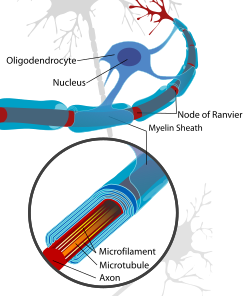Stem Cells With Unusual Metabolism May Be Therapeutic Approach to Fight Inflammatory Diseases Like MS, Study Suggests


Human mesenchymal stem cells (hMSCs), the type of stem cells present in many tissues of adults, may be manipulated to fight inflammation and used as a cell therapy to treat inflammatory diseases like multiple sclerosis (MS), a study reports.
In the future, researchers plan to use animal models to see if the capacity of these cells to combat inflammation can be exploited to treat MS-like disease.
The study “Commitment to Aerobic Glycolysis Sustains Immunosuppression of Human Mesenchymal Stem Cells” was published in the journal Stem Cells Translational Medicine.
The research, led by a team at the Florida A&M University-Florida State University (FAMU-FSU), College of Engineering, found that hMSCs in adults can be manipulated to work in an energy-producing mode that promotes the resolution of inflammation during response to tissue injury.
hMSCs have gained extensive interest as an “off-the-shelf” potential cell therapy in the field of regenerative medicine. These type of stem cells are known for their ease of harvesting from adult donors (e.g. blood, bone, and fat tissue), and their capacity to regenerate several tissue types.
More recently, it was proposed that the tissue repair properties of hMSCs rely on their ability to modulate immune responses and help resolve inflammation at the injured site. For this to happen, hMSCs need to adapt to the local microenvironment, including changing the way they use the available nutrients to produce their energy.
Scientists found that under inflammatory conditions, these cells use sugar (glucose) alone together with oxygen to produce their energy, a type of metabolism referred to as aerobic glycolysis. Importantly, when they use this type of energy-producing mechanism, their ability to inhibit inflammation gets enhanced.
Normally, human cells prefer to use glycolysis only when oxygen is limited (e.g., during intense exercise). But recent studies have suggested that cells use this process more frequently than thought, linking it to diverse cellular functions.
Researchers exposed hMSCs grown in the lab to a natural inflammatory trigger called interferon gamma (IFN‐γ), and looked at how they responded to this stimuli. The cells switched their metabolism toward glycolysis, which fueled their release of anti-inflammatory chemical messengers, or cytokines, and inhibited immune cell growth (specifically the proliferation of activated immune cells called T-cells).
In light of their findings, scientists propose that it one day may be possible to harness the metabolism of hMSCs “to enhance their immunomodulatory properties and therapeutic efficacy in various diseases,” the researchers wrote.
“The idea to use cells as ‘living medicine’ to cure disease has a long history,” Teng Ma, chair of the FAMU-FSU department of chemical and biomedical engineering and senior author of the study, said in an FSU news story by Kathleen Haughney.
“We are interested in how to produce the therapeutically competent cells from a limited donor source on a large-scale and to determine whether cells from older donors are as potent as the ones from young donors. Understanding how cells use energy seems to be a key factor,” Ma added.
In the future, researchers will focus on two goals. They will investigate how to better preserve hMSCs’ metabolism and restore older cells’ metabolism to improve their immunosuppressive properties and will test if these cells are capable to treat MS-like disease in animal models.
Source: multiplesclerosisnewstoday.com

No comments:
Post a Comment